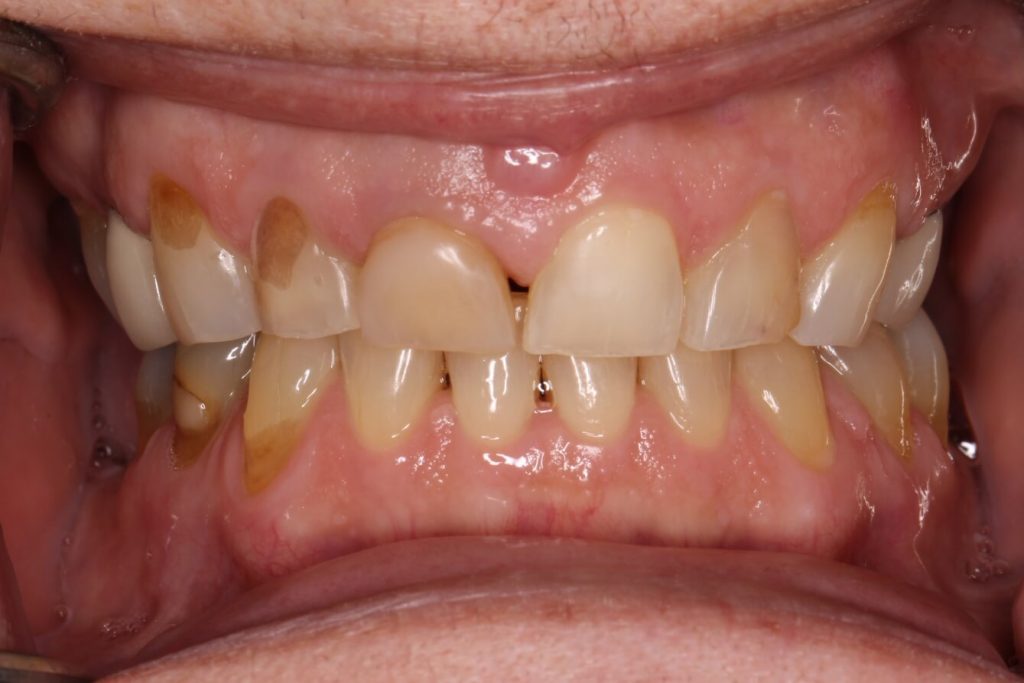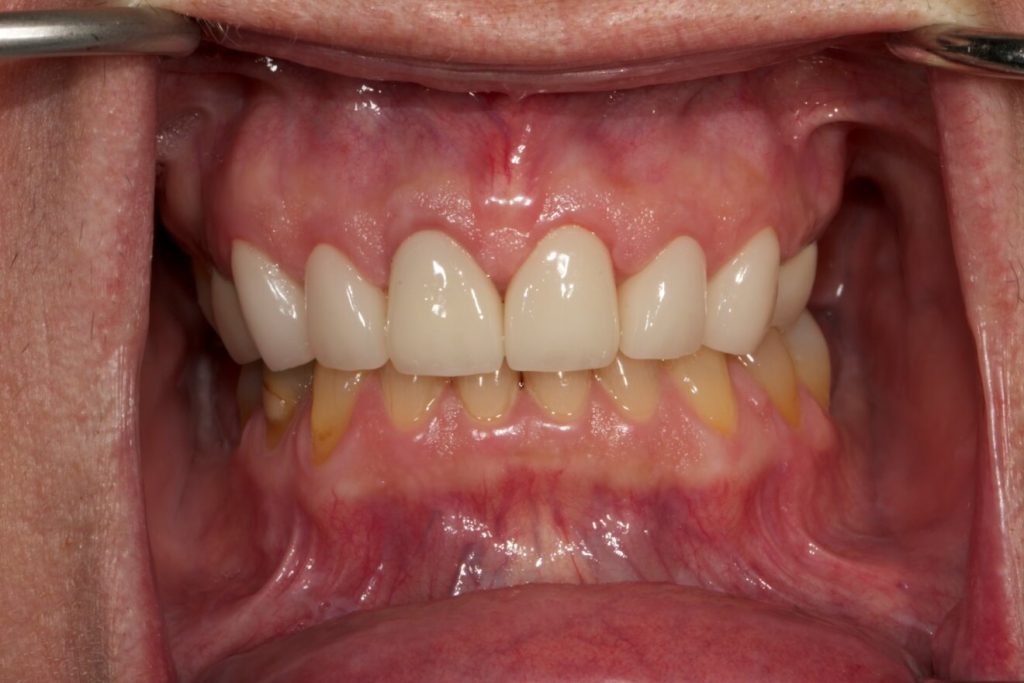Crown lengthening can be performed for aesthetic and functional reasons. To help restore damaged teeth due to wear, the tooth can be exposed to help your restorative dentist improve the appearance of your smile. The bone and tissue around the tooth is altered to expose healthy tooth structure. During a healing period, a temporary restoration can be placed if needed. To help improve your smile, excess bone and gingiva may be altered to reveal a more natural tooth length in order to correct a ‘gummy smile’. Coordination between your periodontist and dentist will take place to give the desired outcome.


Two Types of Crown lengthening
Esthetic Crown Lengthening: a type of periodontal plastic surgery performed on the gums to improve the appearance of the smile. It is a relatively simple procedure where excess gum tissue, and sometimes bone, is removed and reshaped to create a more attractive smile. Patients who feel they have a gummy smile often opt for this type of procedure. Procedure duration is about an hour long. It is essentially a gum lift whereby more of the natural tooth surface is exposed as a result, creating a wider and more attractive smile.
The Benefits
- Improves the appearance of a gummy smile
- Removes excess gum and bone tissue
- Reshapes the smile
- Improves the oral health of the mouth
- Reduces the risk of periodontal disease
Functional Crown Lengthening: a type of periodontal plastic surgery performed on the gums to prepare a tooth for other restorative or cosmetic dentistry treatment. This procedure is similar to esthetic crown lengthening except the purpose of this treatment is not for cosmetic appearance but as the first step for a dental restoration. This procedure is primarily used in patients who have:
- A severely decayed tooth or teeth
- A tooth that is broken below the gum-line
- Tooth that have an insufficient foundation for restorative pieces, such as crowns or bridges which rely on remaining teeth for support
The Procedure
Local anesthetic will be used before the procedure starts to prevent any pain or discomfort for the patients during treatment. Small incisions in the gum tissue will be made in order to separate the gums from the teeth. Some bone tissue may also be removed to create a natural looking smile. After the gums and bone have been reshaped, sutures are used to help encourage tissue growth and reattachment. A follow up appointment in 2 weeks will be scheduled to make sure the area is healing properly.
Featured Services

Meet Our Dedicated and Talented
Periodontal Team
Schedule Your Periodontal Examination Today!
Appointments







